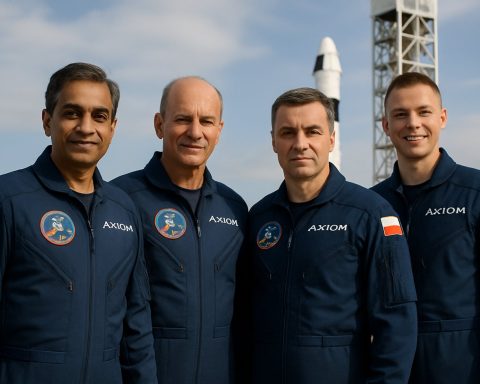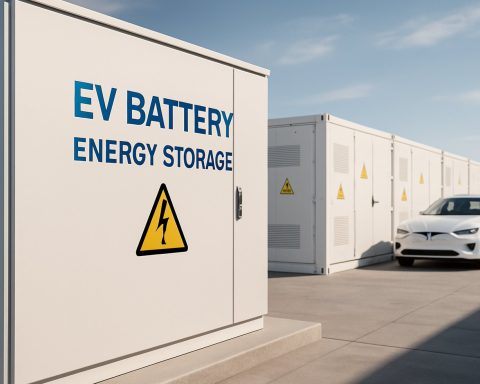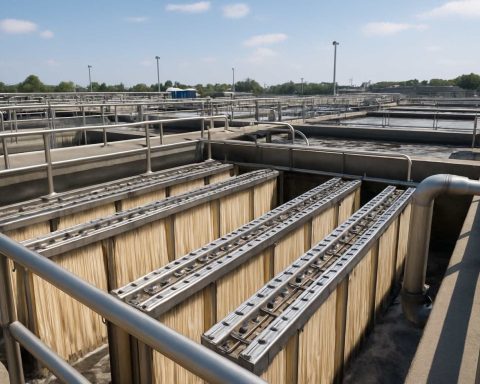- Tesla’s solar roof tiles were introduced in 2016 as an innovative solution combining clean energy and aesthetic design.
- The company initially aimed to install 1,000 solar roofs per week by late 2019, but reality fell short, with only about 23 installed weekly as of 2022.
- Shifting focus, Tesla now emphasizes Powerwall installations and collaborates with certified third-party installers for solar solutions.
- Cost remains a significant barrier, as solar roof tiles are often more expensive than traditional roofing and solar panel alternatives.
- Local installers, such as Weddle and Sons Roofing, occasionally manage new installations, but they are infrequent.
- Tesla’s solar roof journey highlights the challenge of translating ambitious concepts into practical, widespread reality.
- Consumers may find conventional rooftop solar panels more accessible and cost-effective, with platforms like EnergySage assisting in the solar transition.
The dream painted by Tesla in 2016 felt like a vision out of a sustainability utopia—a glistening new type of roof, seamlessly weaving advanced solar technology with aesthetic elegance. Elon Musk, with his characteristic audacity, introduced these solar roof tiles as a transformative leap towards clean energy, destined to democratize solar power while offering a stylish rooftop upgrade.
Initially, the world watched eagerly as Tesla ambitiously promised to roll out an impressive 1,000 solar roofs per week by late 2019. Reality, however, has been less cinematic. Despite a slow start in 2020, when Tesla finally kicked off some form of volume production, the number of installed solar roofs lagged far behind those bold projections.
Now, in the shadows of fading spotlight, the Tesla Solar Roof project has quietly slipped from the company’s list of priorities. By 2022, only about 23 solar roofs found their place atop homes each week—a modest fraction of the initial target. The giant has turned reticent, no longer offering details on its solar deployments. The subsequent silence has left many curious about the true status of this once-celebrated innovation.
The business strategy has shifted significantly. Tesla has pivoted, channeling efforts towards Powerwall installations and providing solar solutions via certified third-party installers. For those interested in the touted technology, Tesla now redirects inquiries to these third parties, stepping away from direct installation.
Yet, here and there, whispers of new installations arise, like the recent 20 kW solar roof installation in Topeka, Kansas. These projects, though welcome, are few and far between, and primarily managed by local installers, like Weddle and Sons Roofing.
The setbacks appear rooted in one glaring issue: the cost. The solar roof tiles, positioned as a premium offering, often surpass other high-end roofing solutions. The challenge lies in making it a financially viable alternative to traditional roofs and standard solar panels. While some Tesla-certified installers even guide customers toward the more traditional combination of a regular roof with solar panels, due to cost considerations, the original promise fades further into the horizon.
As the Silicon Valley icon recalibrates its focus onto more viable segments of its energy division—like Megapacks and Powerwalls—consumers seeking solar solutions might find conventional rooftop solar panels more accessible and cost-effective. While the dream of Tesla’s solar roofs transforming every city skyline remains distant, the widespread adoption of solar energy continues through more traditional paths.
For prospective solar adopters, there’s an array of competitive options available. Services like EnergySage offer platforms for comparing solutions, aiding in navigating the solar transition with ease and affordability. Ultimately, Tesla’s foray into solar roofs serves as a reminder of the gap that sometimes exists between visionary ambition and practical execution.
The Untold Story of Tesla’s Solar Roof: What Went Wrong and What You Should Know
Understanding the Tesla Solar Roof: A Dream Transition
In 2016, Tesla’s vision for solar roofs captivated the world with its promise of a sustainable future, blending high-performance solar technology with elegance. However, the execution of this idea has been less than perfect. Below, we delve into the intricate facets of Tesla’s solar roof journey and explore the options available for consumers today.
How Tesla’s Solar Roof Stacks Up: Features and Limitations
1. Features:
– Tesla’s solar roof tiles integrate seamlessly into the house, replacing conventional roofing materials while generating electricity.
– The tiles are designed to be more durable than traditional shingles.
– They are aesthetically pleasing, which is a significant advantage over standard solar panels.
2. Limitations:
– The cost of Tesla’s solar roofs is higher than traditional solar panels combined with a conventional roof.
– Their availability is limited, and they are currently installed through certified third-party contractors rather than directly by Tesla.
– The complex installation process has resulted in longer wait times and higher labor costs.
3. Specs & Pricing:
– A key deterrent for many potential customers is the cost, which varies significantly depending on the size of the installation and the complexity of the roof.
– The system usually integrates with a Tesla Powerwall battery, allowing for energy storage, but this adds to the cost, which can range from $25,000 to $50,000 or more for a standard home.
Comparing Traditional Solar Panels: Real-World Use Cases and Cost-Effectiveness
– Traditional solar panels can be more cost-effective, offering a quicker return on investment. Many homeowners find that combining a conventional roof with solar panels provides a more affordable solution.
– With companies like SunPower, LG, and others leading the solar panel industry, there is considerable competition resulting in cost reductions and technological advancements.
– According to the National Renewable Energy Laboratory, the cost of traditional solar panels has dropped by roughly 90% since 2009, making them the choice for many environmentally conscious consumers.
Market Forecast and Industry Trends
– The solar market is expected to grow as the cost of solar technology continues to decline and as improvements in efficiency are made.
– Tesla is shifting focus to the Powerwall and Megapack, demonstrating a pivot towards energy storage solutions, which align with the increasing demand for sustainable energy storage options.
Actionable Recommendations for Prospective Solar Adopters
1. Evaluate Costs and Benefits: Interested consumers should analyze their energy needs and financial situation. Platforms like EnergySage offer cost comparisons, estimates, and reviews that can help with decision-making.
2. Consider Standard Solar Panels: If cost is a significant concern, explore conventional panels that offer a balance between aesthetic and economic sensibility.
3. Check for Incentives: Federal and local tax credits, including the Investment Tax Credit (ITC), often help reduce the cost of solar installations. Check eligibility for any incentives in your area.
4. Get Multiple Quotes: Reach out to several certified installers for quotes and compare them, not only in terms of price but also based on service, maintenance, and warranty options.
5. Sustainability Footprint: Consider the environmental impact and sustainability. Opting for solar solutions aligns with a commitment to reducing carbon emissions and promoting clean energy.
In conclusion, while Tesla’s solar roof technology may align with a vision of future aesthetics and sustainability, its practical affordability and implementation remain limited. By exploring the various solar options available, consumers can make informed decisions that best suit their needs and contribute to a more sustainable future. For further information and updates, visit the Tesla website.











